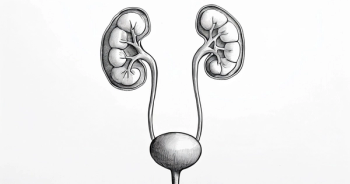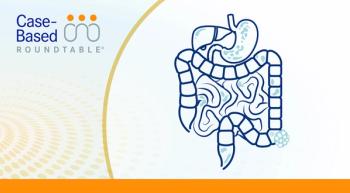
Mosunetuzumab/Polatuzmab Vedotin Combo Advances R/R LBCL Treatment Options
New study reveals mosunetuzumab and polatuzumab vedotin significantly improve outcomes for patients with relapsed large B-cell lymphoma, offering a chemotherapy-free option.
Recent findings from the phase 3 SUNMO study (NCT05171647) reveal that the combination of mosunetuzumab-axgb (Lunsumio) and polatuzumab vedotin-piiq (Polivy), administered subcutaneously, yielded statistically significant and clinically meaningful improvements in progression-free survival (PFS) and objective response rate (ORR) compared with rituximab (Rituxan), gemcitabine, and oxaliplatin (R-GemOx) in patients with relapsed or refractory (R/R) large B-cell lymphoma (LBCL) who are not eligible for transplant.1
These pivotal data, presented as a late-breaking oral presentation at the 18th International Conference on Malignant Lymphoma, underscore a potential paradigm shift toward chemotherapy-sparing regimens in this challenging patient population.
At a median follow-up of 23.2 months, the combination of bispecific antibody mosunetuzumab and antibody-drug conjugate (ADC) polatuzumab vedotin demonstrated a 59% reduction in the risk of disease progression or death compared with R-GemOx (HR, 0.41; 95% CI, 0.28-0.61; P <.0001). The median PFS for patients receiving the novel combination was 11.5 months (95% CI, 5.6-17.6), a 3-fold increase over the 3.8 months (95% CI, 2.9-4.1) observed with R-GemOx.
Furthermore, the 12-month PFS rate was more than double in the combination arm at 48.5% (95% CI, 39.6-57.4) vs 17.8% (95% CI, 5.4-30.3) for R-GemOx. This PFS benefit remained consistent across various subgroups, notably including high-risk patients with primary refractory disease (HR 0.46, 95% CI, 0.29-0.72).
While overall survival (OS) data were not yet mature at the interim analysis, a numerical favoring of the mosunetuzumab and polatuzumab vedotin combination was observed, with a median OS of 18.7 months (95% CI, 14.1-not evaluable [NE]) compared with 13.6 months for R-GemOx (95% CI, 9.9-NE; HR, 0.80; 95% CI, 0.54-1.20).
Beyond PFS, the combination also showed a superior ORR. Approximately 30% more patients achieved an objective response in the mosunetuzumab and polatuzumab vedotin arm (70.3%; 95% CI, 61.9%-77.8%) compared with the R-GemOx arm (40.0%; 95% CI, 28.5%-52.4%). The complete response (CR) rate was notably doubled, reaching 51.4% (95% CI, 42.8%-60.0%) with the combination vs 24.3% (95% CI, 14.8%-36.0%) with R-GemOx. Nearly 75% of patients who achieved a CR with the bispecific-ADC combination were still in remission after 1 year (72.6%; 95% CI, 61.4%-83.8%), compared with 44.1% (95% CI, 13.2%-74.9%) for R-GemOx.
The safety profile of the mosunetuzumab and polatuzumab vedotin combination was consistent with the known profiles of its individual components, suggesting its potential applicability in outpatient and community care settings. The incidence of cytokine release syndrome (CRS) events in the combination arm was low, affecting 1 in 4 patients, with less than 5% of patients experiencing grade 2 or 3 CRS.
Notably, no immune effector cell-associated neurotoxicity syndrome (ICANS) events were reported. The rates of grade 3/4 (58.5% vs 57.8%) and grade 5 (5.2% vs 6.3%) adverse events (AEs) were similar between the combination and R-GemOx groups. Furthermore, the combination arm demonstrated fewer AEs leading to treatment discontinuation (2.2% vs 4.7%), reinforcing its favorable tolerability.
Large B-cell lymphoma, predominantly diffuse large B-cell lymphoma (DLBCL), represents the most common aggressive non-Hodgkin lymphoma. While frontline therapies are often effective, up to 40% of patients will experience relapse or refractory disease. For these patients, particularly those that are ineligible for or unable to tolerate high-dose chemotherapy followed by stem-cell transplant—traditionally the second-line standard—effective and well-tolerated treatment options remain a critical unmet need.
The mosunetuzumab and polatuzumab vedotin combination offers a novel, off-the-shelf therapeutic strategy that could avoid traditional chemotherapy, providing a meaningful alternative for patients with R/R LBCL. The regimen's fixed-duration administration and potential for outpatient use could significantly enhance patient access and convenience, addressing diverse patient and healthcare system requirements.
In recognition of its clinical utility, the National Comprehensive Cancer Network (NCCN) has recently incorporated the mosunetuzumab and polatuzumab vedotin combination into the NCCN Clinical Practice Guidelines in Oncology as a category 2A recommendation for the treatment of patients with second-line DLBCL not intended to proceed to transplant.2 This endorsement highlights the growing recognition of this nonchemotherapeutic option in the treatment landscape. Submissions of the SUNMO study results to global health authorities, including the FDA, are anticipated.1









































